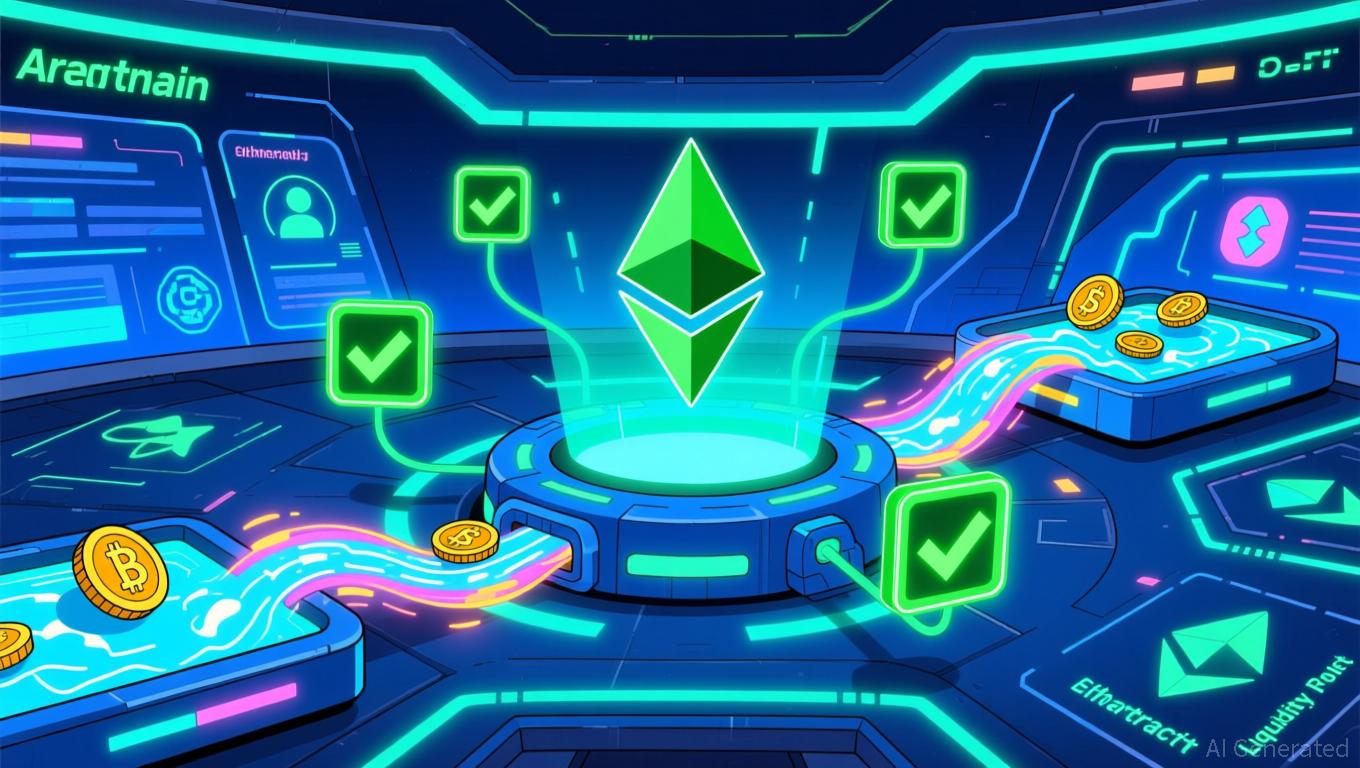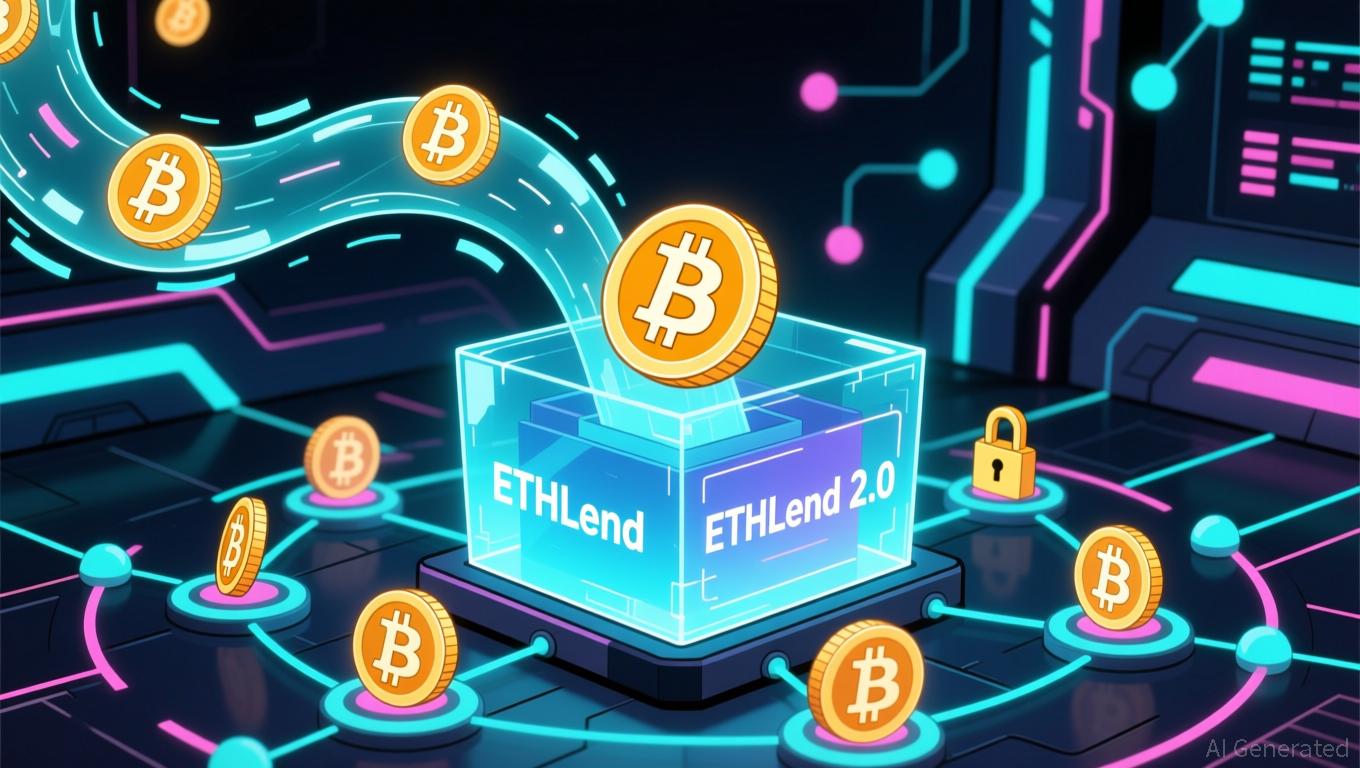Vitalik Buterin's Support for ZKsync: Driving Ethereum's Layer 2 Leadership and Unlocking Strong Investment Potential
- Vitalik Buterin endorses ZKsync's Atlas upgrade, signaling Ethereum's strategic shift to ZK-based scaling solutions. - Atlas enables 15,000 TPS with 1-second finality, unifying Ethereum's Layer 1 and Layer 2 liquidity through ZK proofs. - ZK token surged 50% post-endorsement as institutional adoption grows, driven by deflationary tokenomics and enterprise-grade scalability. - Upcoming Fusaka upgrade aims to double throughput to 30,000 TPS, solidifying ZKsync's competitive edge in Ethereum's Layer 2 ecosy
The Atlas Upgrade: Transforming Ethereum’s Liquidity Framework
Launched in November 2025, the Atlas upgrade
The technical impact is significant. By utilizing zero-knowledge (ZK) proofs, ZKsync delivers scalability while maintaining Ethereum’s security standards.
Market Response and Tokenomics: 50% Rally and Institutional Trust
Data from the fourth quarter of 2025 highlights this momentum.
Institutional Adoption: From Enterprise Integration to Market Leadership
Interest from institutions in ZKsync has grown rapidly after Buterin’s endorsement.
Looking forward,
Strategic Impact on Ethereum’s Roadmap
Buterin’s backing of ZKsync is part of a larger strategic shift. By advocating for ZK-based scaling,
For investors, this marks a pivotal turning point. ZK-based projects like ZKsync have evolved from experimental concepts to essential parts of Ethereum’s ecosystem. The combination of Buterin’s influence, institutional backing, and strong tokenomics presents a persuasive case for long-term investment.
High-Conviction Investment Prospects
The ZKsync ecosystem offers several compelling investment avenues:
1. ZK Token Exposure: Its deflationary mechanism and shift in governance make it both a store of value and a utility asset.
2. Enterprise Integration: Collaborations with financial and technology firms could generate recurring revenue and network effects.
3. Upcoming Upgrades: The Fusaka upgrade’s anticipated boost to 30,000 TPS may drive further adoption and price gains.
With institutional capital flowing in and Buterin’s endorsement, ZKsync has moved beyond speculation to become a central figure in Ethereum’s future. For those looking to benefit from the next stage of blockchain progress, ZK-based protocols present a rare blend of technical advancement, market traction, and alignment with Ethereum’s strategic vision.
Disclaimer: The content of this article solely reflects the author's opinion and does not represent the platform in any capacity. This article is not intended to serve as a reference for making investment decisions.
You may also like
Why is MUTM's DeFi approach drawing in $18.9 million and 18,000 investors in 2025
- Mutuum Finance (MUTM) has raised $18.9M from 18,200 investors via a 250% presale price surge to $0.035 in Phase 6. - Its dual-lending model combines peer-to-contract and peer-to-peer mechanisms to optimize liquidity and capital efficiency. - Phase 6 nearing 99% completion highlights demand for MUTM's automated, intermediary-free lending via Ethereum-based smart contracts. - The project plans Q4 2025 launch of its public lending protocol on Sepolia testnet, emphasizing transparent decentralized ownership.

Global authorities suspend the growth of Biometric Blockchain due to worries about data privacy
- Worldcoin (WLD) fell 14% amid regulatory crackdowns, token unlocks, and market weakness, outperforming crypto's 9% decline. - Colombia, Philippines, and Thailand ordered operations halted and biometric data deleted over privacy concerns. - 37M WLD tokens ($25M) unlocked recently, worsening sell pressure as price consolidates near $0.63 resistance. - Analysts predict $0.75–$0.85 by 2025 if regulations clarify, but warn of potential drops to $0.26 amid unresolved compliance risks. - Project's viability hin

Bitcoin News Update: Aave's ETHLend 2.0 Disrupts DeFi's Dependence on Wrapped Tokens by Introducing Native Bitcoin
- Aave founder Stani Kulechov announced ETHLend 2.0's 2026 relaunch using native Bitcoin as collateral, diverging from wrapped tokens. - The hybrid P2P-liquidity pool model aims to enhance DeFi efficiency while reducing synthetic asset reliance through cross-chain BTC integration. - This revival aligns with growing institutional demand for non-wrapped BTC and could restore utility for the legacy LEND token. - Despite bearish market conditions, the move signals confidence in Bitcoin's foundational role for

The Rapid Rise of ZK Technology and What It Means for Cryptocurrency Markets
- ZK proof ecosystems saw 2025 breakthroughs in scalability, institutional adoption, and on-chain activity, reshaping blockchain infrastructure and crypto markets. - Projects like zkSync Era (27M+ monthly txns) and StarkNet (tripled TVL) demonstrated ZK-rollups' capacity to handle 15,000+ TPS, accelerating Ethereum's Layer 2 dominance. - Institutional giants including Deutsche Bank , Sony , and Nike integrated ZKP solutions for compliance, with Polygon securing $1B+ in ZKP development funding. - ZKP market